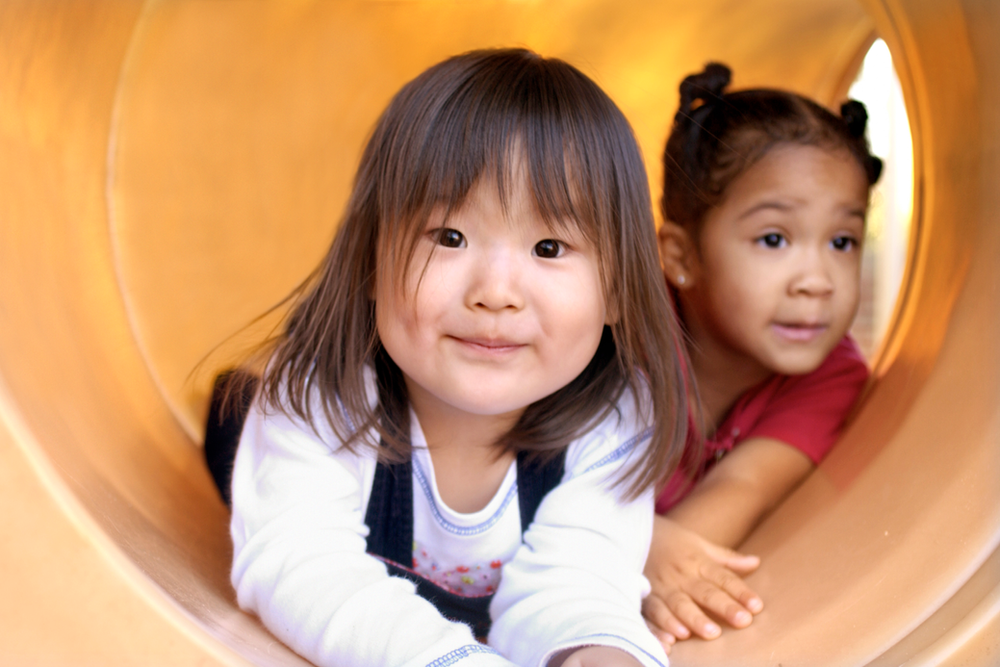
A core tenet of Montessori is that children are free to move. We understand that the child's developing mind is influenced by their interactions with the environment around them, and that movement is necessarily entangled with the child's ability to make sense of the world. In the First Plane of Development, that window from 0-6 years old, children's ability to move influences the entire rest of their development.
Children develop their strength and coordination when they move, even in early infancy. When children move freely, they learn how to manage those moments. They learn about their own bodies and the capacity of those bodies to influence their environments. Children develop problem solving skills when they are free to move, too. Moving along, around, above, across, through, over… children learn to make choices about how to move to be able to get their needs met. Children also communicate through free movement in this plane. Preverbal children use movement to convey all sorts of emotions and needs. Verbal children, too, express themselves with more complexity than their vocabularies may allow by developing facial expressions, body language and eye contact. And, of course, we know that human touch in this plane is especially important, as children build their relationships with other people through the ways in which they move their bodies.
In the Infant classrooms, you may be surprised to see children moving freely throughout the room. Absent are the cribs and high chairs, replaced, instead, by floor beds that children can crawl in and out of independently and chairs as low as four inches off the ground. Mobiles are hung low to the ground to allow for ample time on the ground with interesting things to look at. The floors are covered with a variety of surfaces to move across and explore. Infants are held in a caregiver's arms or supported in stationary chairs, but they are never belted in to high chairs that restrict their movement and they aren't left in electronic bouncy chairs or swivel stations that give them false feedback from their own bodies' stimuli.
In the Toddler classrooms, you'll see low shelves with a variety of manipulatives to act upon. Children may have surfaces to climb up and over or through. They'll enjoy soft perches and active gross motor play. You might be surprised to see toddlers carrying heavy objects or learning to manipulate real tools. Even the toileting stations are designed to allow the most freedom of movement, with toddlers participating in standing diaper changes, learning to wipe their own bodies and to influence their toileting until they are ready to master the tiny toilets and sinks available to them here.
In the Early Childhood classrooms, you'll notice children moving throughout the space at their own time and pace. Children can work standing up, lying down, or seated at a table. You might see them carrying heavy baskets or cumbersome maps from one side of the room to the other. You'll notice that, as in the environments for younger children, furniture is designed to give the child as much freedom as possible: low chairs and tables that the child can manage independently, soft spaces, ladders, stools to climb on to and sinks that are low enough to access independently.
Throughout these spaces, we protect children's freedom to move, both by designing environments that are manageable with the physical development they have at each stage and by encouraging their free exertion on those environments. Children move around the classroom as their curiosity guides them rather than by the direction of the teacher. And that curiosity is never thwarted by a chair that's too heavy to manage or a shelf that's too high to reach. Instead, we offer a physical environment that responds precisely to the actions of the child, free from battery operated or electronic bells and whistles, and reinforcing to the child's developing understanding of their own body and the dimensions of the world around them.
#Movement #FirstPlane #ForParents #ForTeachers #Theory
